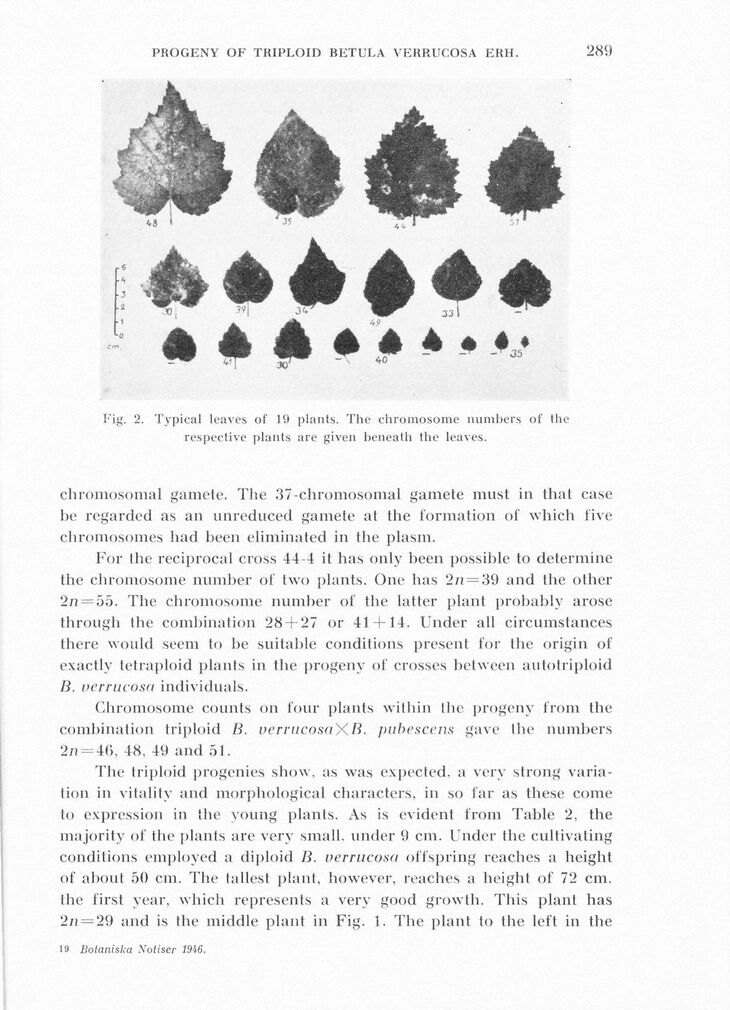
Full resolution (JPEG) - On this page / på denna sida - Sidor ...

<< prev. page << föreg. sida << >> nästa sida >> next page >>
Below is the raw OCR text
from the above scanned image.
Do you see an error? Proofread the page now!
Här nedan syns maskintolkade texten från faksimilbilden ovan.
Ser du något fel? Korrekturläs sidan nu!
This page has never been proofread. / Denna sida har aldrig korrekturlästs.
PROGENY OK TRIPLOID BETULA VERRUCOSA ERH.
289
Fig. 2. Typical leaves of 19 plants. The chromosome numbers of the
respective plants are given beneath the leaves.
chromosomal gamele. The 37-chromosomal gamete must in that case
be regarded as an unreduced gamete at the formation of which five
chromosoines had been eliminated in the plasm.
For the reciprocal cross 44-4 it has only been possible to determine
the chromosome number of two plants. One has 2/i = 39 and the other
2n = 55. The chromosome number of the latter plant probably arose
through the combination 28 + 27 or 41 + 14. Under all circumstances
there would seem to be suitable conditions present for the origin of
exactly tetraploid plants in the progeny of crosses between autotriploid
B. verrucosa individuals.
Chromosome counts ön four plants within the progeny from the
combination triploid B. verrucosayji. pubescens gåve the numbers
2n = 4(i, 48, 49 and 51.
The triploid progenies show, as was expected. a verv strong
variation in vitality and morphological characters, in so far as these come
to expression i ti ’lie young plants. As is evident from Table 2, the
majority of the plants are verv small, under 9 cm. Under the cultivating
conditions employed a diploid B. verrucosa offspring reaches a height
of about 50 cm. The tallest plant, however, reaches a height of 72 cm.
the first year, which represents a verv good growth. This plant has
2/1 = 29 and is the middle plant in Fig. 1. The plant lo the left in the
19 Botaniska Xotiser 19i6.
<< prev. page << föreg. sida << >> nästa sida >> next page >>